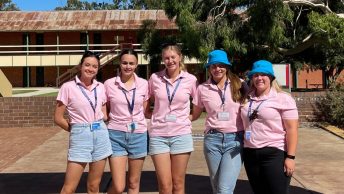With the federal election coming up, now it is more important than ever to have an understanding of the workings of Australian politics. However, this can be a pretty complicated business, especially with all the changes in leadership that have been happening in the last few years. Even if you know the leaders of the major parties, it can be difficult to keep track of their history, policies, and personality. There are loads of great resources out there, like programs on the ABC or the websites of individual political parties, but for those of us who are busy, here is a quick and simple guide to the three major contenders for positions of power in this upcoming election.
Malcolm Turnbull
Unfortunately nicknamed Turncoat Turnbull by those who don’t support his leadership, Malcolm Turnbull is Australia’s current Prime Minister and leader of the Liberal Party. He came to power in 2015 after winning a ballot within the party and taking over Tony Abbott’s role as Prime Minister. During his time as PM Turnbull has begun to implement a National Broadband Network and got rid of Abbott’s initiative to bring back knights and dames as an honour system in Australia. This election, Turnbull is focusing on businesses, infrastructure and methods of travel, job growth and protection of vulnerable workers, as well as consideration of marine protection and investment in the Great Barrier Reef. He was previously the Minister for Communication, so the NBN implementation is at the forefront of the LNP’s self-promotion.
Bill Shorten
Bill Shorten is the leader of the Australian Labor Party (ALP), which is currently the opposition in federal parliament. When Abbott won the 2013 election, there was a leadership ballot between Bill Shorten and Anthony Albanese to become the leader of the ALP, which Shorten won. Shorten has had many roles within politics, mostly to do with education and workers’ rights, which is similar to the ethos of the ALP. Some of the platforms of the party for this election include investing in universities and TAFE to keep higher education accessible, protecting penalty rates, and ‘budget repair that’s fair’. When first elected, Shorten was popular in leadership polls, but has decreased in popularity since Turnbull’s election.
Richard Di Natale
Richard Di Natale is the leader of the Australian Greens, which is a large left-wing Australian political party which, while popular, has never been in power. Di Natale became the leader of the party in 2015 after the resignation of the former Greens leader, Christine Milne, but Di Natale has been involved in federal politics since 2007. As the name suggests, the Greens have a focus on the environment, and in this election are focusing on acting on climate change, building infrastructure for renewable energy, and creating plans for coal workers when coal ceases to be the main source of energy in Australia. Socially focused policies such as welcoming people seeking asylum, providing dental care for children, and gambling reforms are also involved in the Australian Greens’ campaign.









